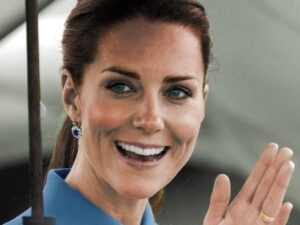[imagesource: Mathabela Tsikoane]
Spending a lot of her time 30 metres underground, in “spaces that very few people have gone before”, South Africa’s so-called underground astronaut Keneiloe Molopyane has emerged just long enough for us to meet her.
Except she typically responds to the name ‘Bones’ and is really an archaeologist and biological anthropologist, who first made a name for herself as a member of the second group of underground astronauts to excavate the remains of Homo Naledi, CNN reports.
Second, because the first group of six all-female underground astronauts, lead by the famous paleoanthropologist Lee Berger, helped to unearth most of the remains of the previously unknown human species.
Homo Naledi was a big deal for South Africa, found deep in the Rising Star cave system roughly an hour’s drive northwest of Johannesburg. The incredible discovery has changed our understanding of human evolution.
At the age of 33, Molopyane has been named a 2021 Emerging Explorer by the National Geographic Society, getting the world’s attention as part of that 2018 excavation crew.
Going that far down is not for just anyone, though.
An underground astronaut spends their time working in dark, damp conditions, and often find themselves squeezing through 18-centimetre holes.
Can a head even get through that gap?
“We were really put in very extreme situations, crawling through very tight tunnels,” Molopyane says.
“I’ve had my butt stuck, I’ve had my head stuck and it’s a challenge not to panic — but also, you learn a lot about yourself and inner strength in those conditions.”

Well, Molopyane is doing an amazing job of going to daunting places to “solve mysteries from the past where people are not around to answer those questions”, as well as being a black female role model for other young girls who dream of building a career in the sciences:
“In some ways I have become the transformation we want to see in the sciences,” Moloypane says, while also being quick to point out that she is all about action. “A lot of time has been spent talking about transformation in the palaeosciences. I’m not really one to talk — I prefer to actually do it.”
I guess having been brought up in the mining town of Benoni, with two medical doctors as parents, Molopyane was well acquainted with skeletons and digging.
She’s stacked up the experience since then, featuring as a maritime archaeologist for the Iziko Museum, teaching in the archaeology department at the University of Witwatersrand (Wits) in Johannesburg, and being named the curator of the Maropeng and Sterkfontein Caves Visitor Centre in the Cradle of Humankind.
Now, having left her spot as curator, she is making it work as the first postdoctoral research fellow in the Centre for the Exploration of the Deep Human Journey (CEDHJ) at Wits University.
We are looking forward to seeing more of what ‘Bones’ can discover down in the depths.
[source:cnn]





